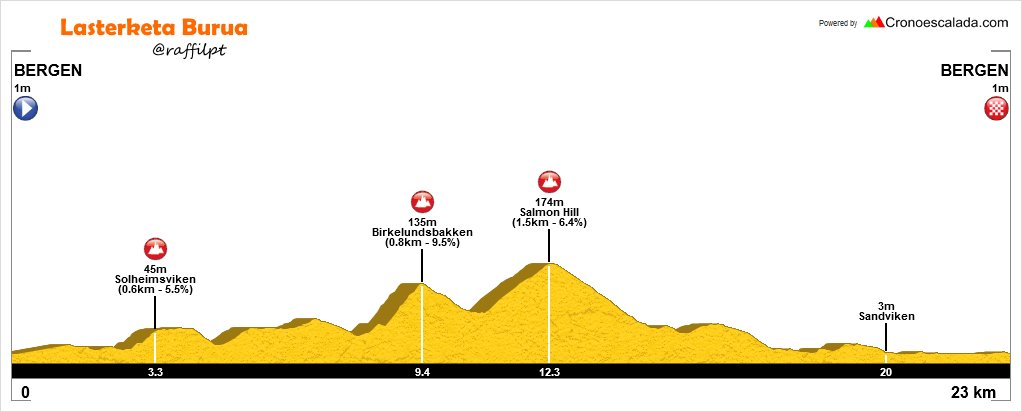The courses do miss the 1969 amateur Worlds course, which was held in Brno, Czech Republic, on the Masaryk-Ring, while the pros raced at Zolder.
I have for a long time wanted to do a long post on the use of motor racing circuits in cycling, since back in the day there were much longer, more technically challenging and complex courses used in car racing than in the present day now that racing technology has rendered those courses entirely impractical for cars in any head to head format and we have become more keenly aware of safety concerns. The large number of prior World Championships using these longer, more tricky courses was a major part in the consideration, as now often we see autodromes used more to provide a safer, wider atmosphere and stands at the finish so that a sprint can be done safely, rather than in the hope of genuine selectivity, mainly as the courses are so much shorter nowadays that in stage races lapped traffic would become an issue, and that the number of courses with severe gradients are fairly limited nowadays, though there are still a few - Eau Rouge-Radillon at Spa-Francorchamps, for example, has a steep punchy climb up onto the Kemmel straight, and the Tour of California included Laguna Seca's famous Corkscrew a couple of years ago. Courses that incorporate a racing circuit to give a wide, safe finishing sprint but still incorporate other obstacles certainly have their benefits, such as the Imola circuit used in the Worlds in 1968 and the Giro in 2015. Extended road courses like the Solitudering (never used) and the Masaryk-Ring (1969 amateur Worlds) can still be used in full, but the fact that the open road sections of courses like the Sachsenring (1960 Worlds) and Spa-Francorchamps have been closed off to traffic or built over with the new permanent autodromes so that aping the old course in full would be impossible mean that they are no longer viable for cycling (I had to extend the circuit somewhat to incorporate the 1960 Worlds course in my DDR-Rundfahrt in the Race Design Thread, because the old home straight has been re-appropriated as the home straight of the new permanent facility). There's also the Schleizer Dreieck course, which hosted the Friendship Games Road Race in 1984 and several editions of the DDR national championship, to mention, but courses of sufficient length in modern motor racing are few - there's the most famous part-permanent part-temporary facility in the world at Le Mans, of course, but the profile there is almost totally flat. Perhaps the most interesting possible course not previously used would be the Mount Panorama Circuit in Bathurst, Australia, which reaches gradients of 17% on its ascent and is a good 7-8km with roads leading out into the town to give the options of an Imola- or Goodwood-like circuit course. And also... damn, I'd forgotten just how bad the Circuito de Lasarte-Oria was in comparison to almost any other San Sebastián based circuit you could ever conceive...
World championships held on motor racing courses:
- 1928 Nürburgring
- 1954 Solingen - Klingenring
- 1960 Karl-Marx-Stadt - Alte Sachsenring
- 1965 San Sebastián - Circuito Lasarte-Oria
- 1966 Nürburgring
- 1978 Nürburgring
World championships held on circuits incorporating motor racing courses as part of the circuit:
- 1958 Reims - Reims-Gueux
- 1959 Zandvoort - Circuit Zandvoort
- 1968 Imola - Autodromo Enzo e Dino Ferrari
- 1969 (professionals) Zolder - Circuit Zolder
- 1969 (amateurs) Brno - Masaryk-Ring
- 1970 Leicester - Mallory Park
- 1982 Goodwood - Goodwood Motor Circuit
- 1984 Barcelona - includes all of the former Montjuïc street circuit alongside other parts of the city
- 2002 Zolder - Circuit Zolder
Also related:
- 1962 Salò del Garda - course incorporates some parts of but is different to a motorcycle street circuit used at the time
- 1973 Barcelona - same finish as the Parc Montjuïc street circuit that fell out of disuse at this time but different course otherwise
As you can see, courses incorporating motor circuits are increasingly rare but for a period through the 60s and 70s were extremely common. Given that purpose built feature length road cycling circuits are very rare (Krylatskoye Ring and Izu are the only ones I can think of) these courses give a few options for producing interesting courses with comparatively minimal interruption to traffic which is part of the reason I think they were successful for a period, however the developments in both sports contrived to move away from their being conducive to one another; the tendency towards shorter and less dangerous motor racing courses meant that the long courses like Pescara, original Spa-Francorchamps and Reims-Gueux faded from vogue as they were too difficult to marshal and making the required safety improvements too costly over such a distance, while simultaneously the increased professionalism in the péloton meant that more sustained changes in gradient and elevation, often precluded in the newer, shorter autodromes.








